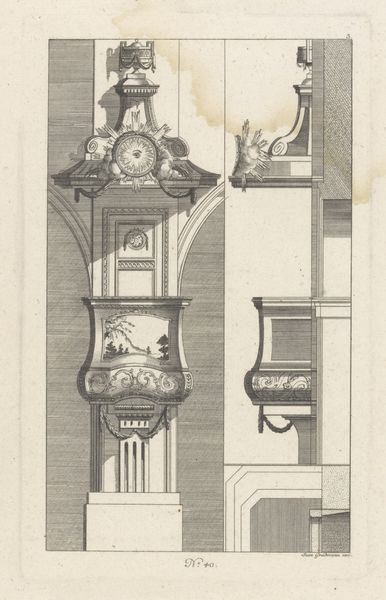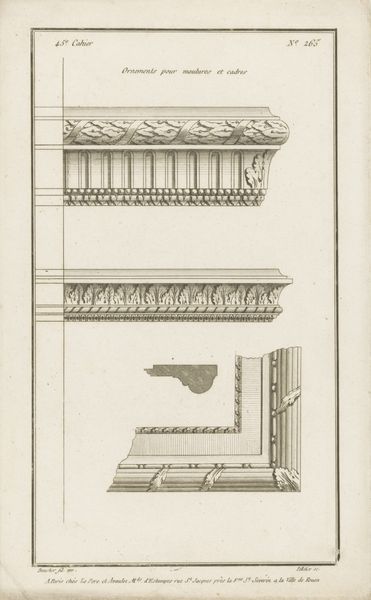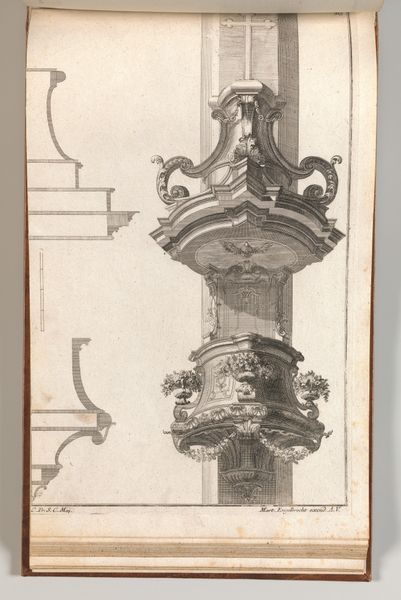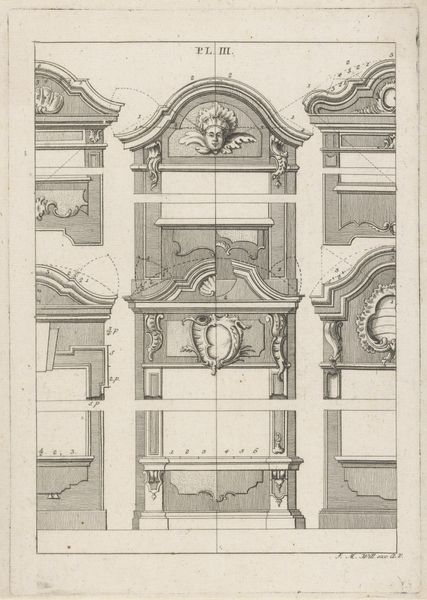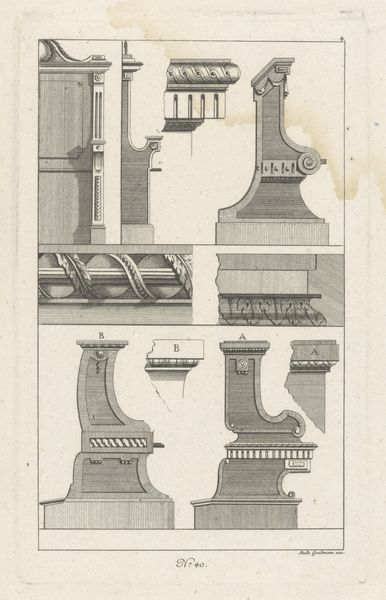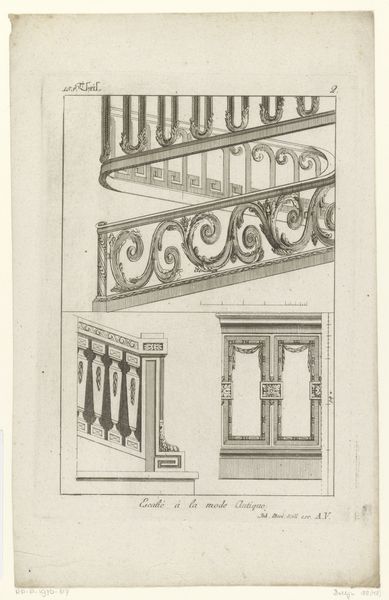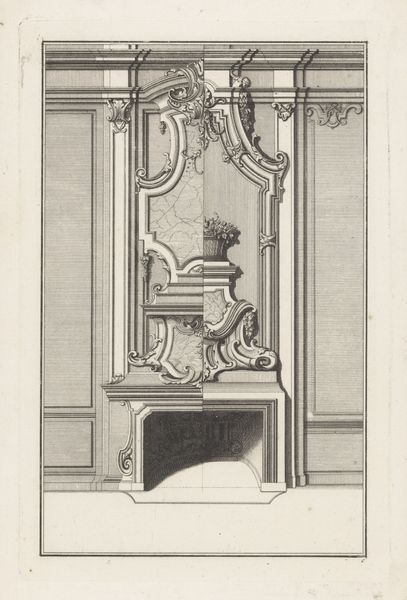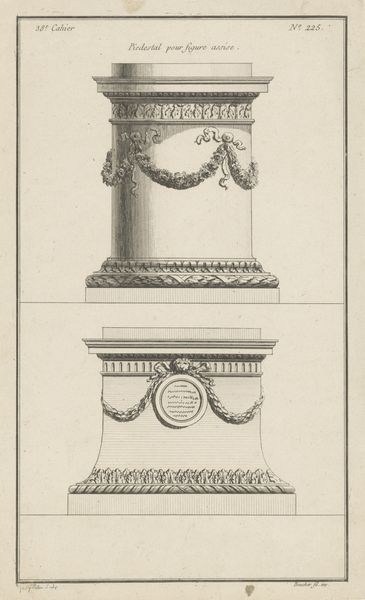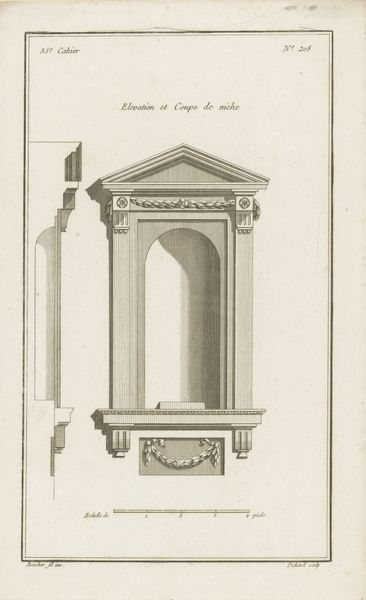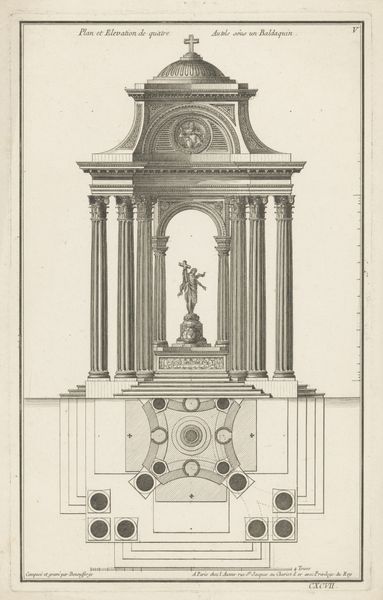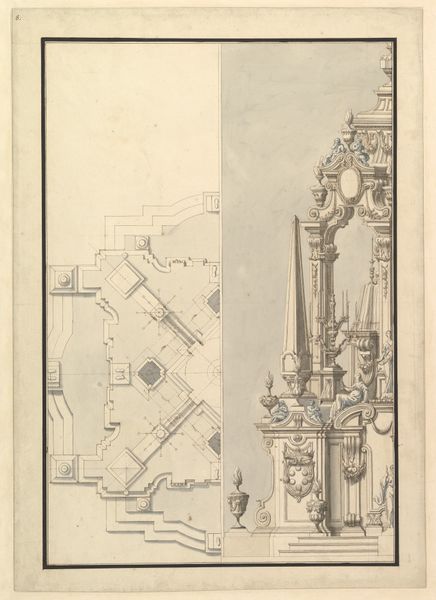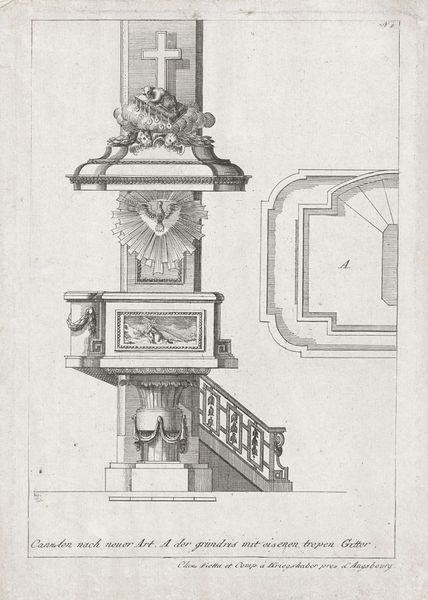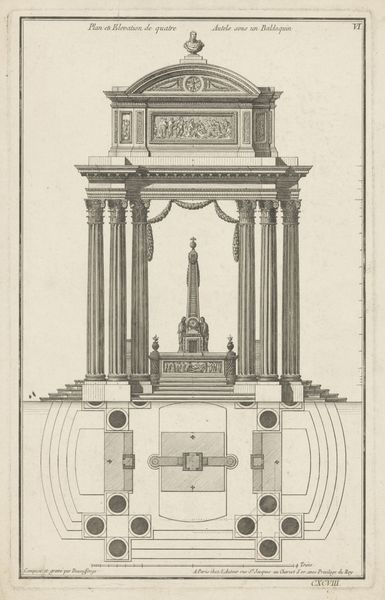
drawing, print, engraving, architecture
#
drawing
#
neoclacissism
# print
#
classical-realism
#
form
#
geometric
#
line
#
engraving
#
architecture
Dimensions: height 286 mm, width 175 mm
Copyright: Rijks Museum: Open Domain
Editor: Here we have Johann Carl Schleich’s "Preekstoel met de stenen tafelen," created around 1780. It's a print, an engraving, a drawing really showing architectural design. There’s such starkness to the line work; it feels very calculated and precise. What’s your take? Curator: This piece exemplifies Neoclassical interests, yes, but what grabs me is how Schleich treats architecture less as divine inspiration and more as crafted output. Look at the precise lines of the engraving – this level of detail emphasizes the *making* of this religious architecture. It spotlights the manual labor involved in translating grand designs into tangible forms. Editor: So, you’re less focused on the symbolism, and more on... the means of production? Curator: Precisely. Where did Schleich source his materials? Who trained him in these techniques of engraving? The labor informs the structure of religious expression here. Think of it this way – these designs reflect the power and patronage required to commission and realize them, not simply divine will. What’s the material reality behind this artistic rendering? Editor: That's interesting. I was stuck on interpreting the religious symbolism but you're pushing me to consider what this print reveals about 18th-century craft and production. Curator: It moves beyond individual expression, doesn't it? This print isn't just a representation; it’s a document reflecting broader economic and social practices inherent in the art making and distribution of art objects like architectural designs. It helps to contextualize the physical spaces that followed. Editor: I never thought about it like that. Thanks! It reframes how I see not just this print, but architecture in general, as reflecting processes beyond the architect's vision. Curator: Indeed! It prompts us to question: what else remains unsaid, yet visibly present, in its materiality?
Comments
No comments
Be the first to comment and join the conversation on the ultimate creative platform.
